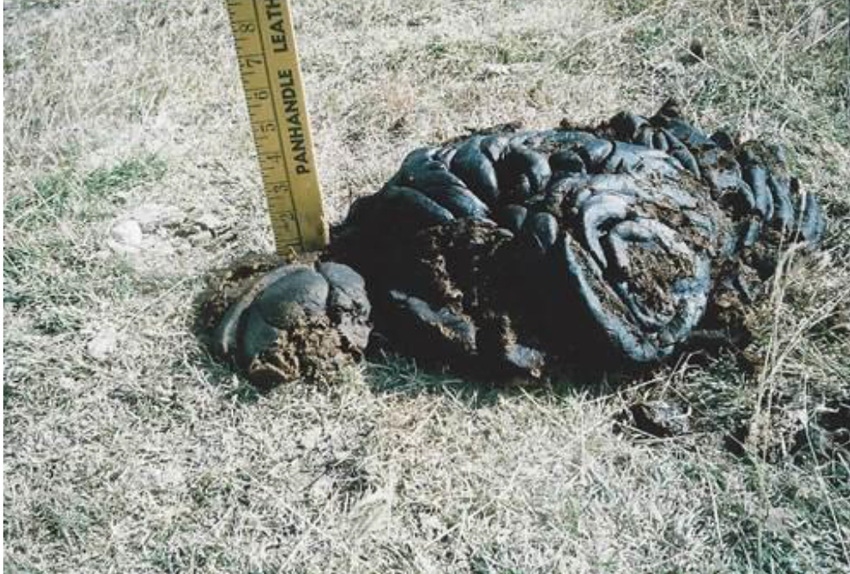Use “cow-pie-ology” to monitor your herd’s nutritional status
You can observe a lot by just looking. Apply that philosophy to cow pies and make money.

American philosopher Yogi Berra once opined that you can observe a lot by just watching. And he’s right. But have you ever thought to apply that idea to cow pies?
Body condition scores (BCS) have been promoted for a long time as a way to monitor the general nutritional status of a cow herd. And for good reason. Cows with a lower BCS don’t milk as well and don’t breed back as well.
But, says cow-calf consultant Dan E. Gary of Amarillo, Texas, owner of Adobe Walls Nutrition, BCS and the dullness or shine of the hair coat reflects what has been going on the past several weeks. To get an idea of your herd’s nutritional status today, he suggests applying some cow-pie-ology.
“There is no better method of determining the nutritional condition of cattle than the visual observation of manure,” Gary says. Years of research have documented that, as manure piles stack up, more protein is needed. That’s because passage rate through the digestive system slows down and instead of a cow pie, there’s a cow stack. Conversely, excess protein results in thin manure.
So what do you look for? “I believe that after weaning, the cow-pie-ology can be 3 to 5 inches and cows gaining weight and putting on condition,” he says. “However, if you have cattle that have slipped and you need to improve body condition, I recommend maintaining the cow-pie-ology at 2 to 4 inches,” he says.
“Beginning three weeks pre-calving, it is a good idea to attempt to have the average manure piles between 2 and 4 inches high, flat and without layers. As piles begin to stack higher, layers will be evident.”
The key is to look for the average. “Regardless of the nutritional level, there will always be some thin piles as well as some stacked piles,” he says. And he adds, as you become more efficient at cow-pie-ology, you’ll realize that each pasture is different and each set of cattle are different and may require different amounts of feed.
The toughest time to stay on top of cows nutritionally is the first few weeks of green-up, he says. This is the only time of the year when cow-pie-ology doesn’t work as well. That’s because the percent protein in the grass is high and manure will be thin, but often the cattle are not getting enough total protein and TDN.
“During this time, my philosophy has always been to feed the cattle more than I think they need, just for insurance. You may spend a couple dollars more, but it will come back to you in weaning rate and weaning weight.”
Protein declines as grasses mature and turn brown, and many ranchers in Gary’s area of the Texas Panhandle, Oklahoma Panhandle and Eastern New Mexico supplement winter pastures with protein cake, or cubes. Feeding two or three times a week is an excellent time to do a little cow-pie-ology.
But do it right. Research shows that manure piles should be read where cattle are at rest. “The water troughs are perfect locations to observe cow-pie-ology because, if cattle trot only a couple hundred yards to the cake wagon, the manure piles will be thinner than if the same cattle were observed at rest,” he says. This is a good reason to feed later in the morning, when cattle are on water.

70+ photos showcasing all types of cattle nutrition
Readers share their favorite photos of cattle grazing or steers bellied up to the feedbunk. See reader favorite nutrition photos here.
And it’s a good way to keep close tabs on your supplement costs. If the manure is stacking up and there are layers in it, those cows need some feed. But if the cow-pie-ology is 4 inches or less, they’re still getting adequate protein from the forage, he says.
And that’s the key to maximizing net profit, Gary says—giving the cow what she needs, when she needs it. “The timing of supplemental feed is more important than the total amount of feed,” he says, “just as the timing of rain is more important than the total amount of rain.”
By applying cow-pie-ology to your daily ranch work, Gary says you can let your cows tell you when to start feeding, how much to feed each class of cattle and when to stop. By matching your supplemental feeding to your herd’s nutritional needs, you not only feed more cost-effectively, he says, but you’ll improve breed-up, have 75% of your calves hit the ground in the first 30 days, and improve weaning rate and weaning weight.
You might also like:
Late-gestation trace mineral supplementation shows promise
60 stunning photos that showcase ranch work ethics
55 photos celebrating spring on the ranch
6 tips for proper electric fence grounding
Rubes cartoons updated with new laughs
About the Author(s)
You May Also Like


.png?width=300&auto=webp&quality=80&disable=upscale)
